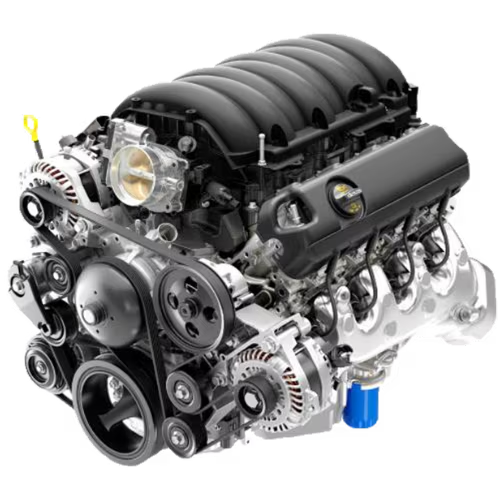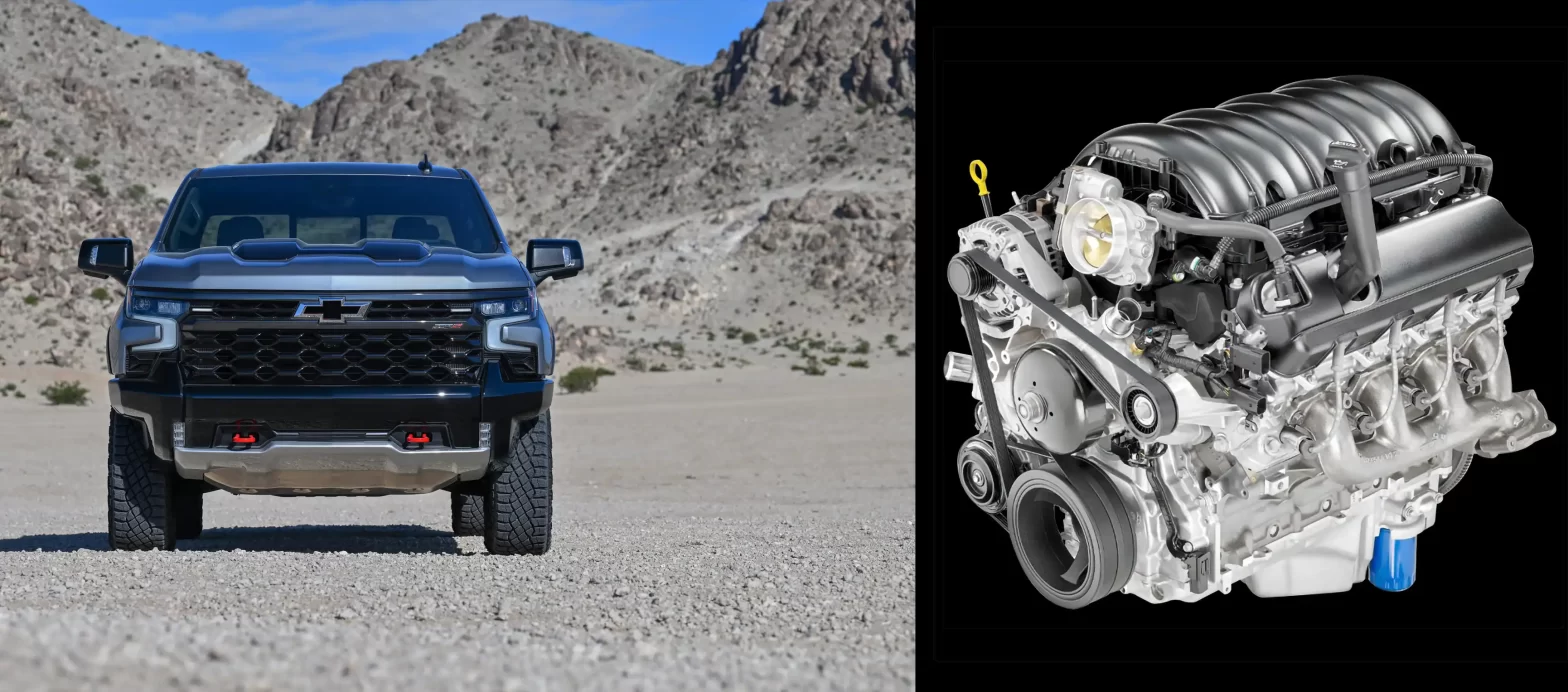If you own a Chevy Silverado, GMC Sierra, Tahoe, Yukon, or even a Cadillac Escalade with the 6.2L L87 or 6.6L L8T V8, you might have noticed some unexpected noises from under the hood. Maybe a chirp, squeak, or sputter caught your ear while idling or restarting. It’s easy to assume something’s wrong, but GM has made it clear—these noises are normal and don’t mean there’s a problem with your engine.
I’ve been around GM trucks long enough to know that these big V8s have their own unique sounds. If you’re hearing something unusual, it’s worth understanding what’s normal and what’s not—so you don’t waste time chasing a “fix” for something that isn’t broken.
The Engines: 6.2L L87 vs. 6.6L L8T
First, let’s talk about the engines themselves.
6.2L L87—The Performance V8
This is the biggest gas engine available in GM’s half-ton trucks and SUVs. It’s a modern small-block V8 with Dynamic Fuel Management (DFM) that can shut off cylinders to save fuel. Power-wise, it cranks out 420 horsepower and 460 lb-ft of torque. You’ll find it in:
- Chevy: Silverado 1500, Tahoe, Suburban
- GMC: Sierra 1500, Yukon
- Cadillac: Escalade
6.6L L8T—The Workhorse
If you’ve got a Silverado HD or Sierra HD, your gas engine option is the 6.6L L8T. This one’s built tough, with a cast-iron block instead of aluminum, and it delivers 401 horsepower and 464 lb-ft of torque. Unlike the 6.2L, it doesn’t have cylinder deactivation—it’s designed to work hard, all the time.
Now, both of these engines have some quirks when it comes to noise, and GM recently put out a revised technical bulletin (22-NA-218, January 2025) explaining what’s normal. Let’s break it down.

Why Does My Truck Make That Noise?
If you’re hearing a high-pitched chirp, squeak, or sputter, especially when starting or restarting, you’re not alone. GM says these noises are more noticeable on the 6.2L and 6.6L than on the 5.3L V8. The sound is usually most obvious when you’re:
- Outside the truck or driving with the windows down
- Near a wall, guardrail, or another vehicle, where the sound reflects
- Restarting after Auto Stop/Start or coasting to a stop
The key thing to remember is that these noises are a result of the way GM controls ignition timing and spark retard—it’s all part of how these engines operate. Here are the specific situations where you might hear them.
4 Common Noises That Are Completely Normal
1. Chirping or Squeaking at Startup (Catalyst Warm-Up)
- When It Happens: Right after starting the engine, lasting about 30 seconds
- What’s Happening: The engine is retarding spark timing to heat up the catalytic converter faster for emissions control.
- Where You’ll Hear It: Outside the truck, under the body, or in the wheel well area.
This noise isn’t new—GM trucks have done this for years—but it seems more noticeable with these newer engines.
2. Quick Chirp or Sputter During Engine Restart
- When It Happens: When coasting down to 14 MPH (22 km/h) and the engine restarts
- What’s Happening: The computer briefly retards spark timing to prevent a torque surge.
- What It Sounds Like: A quick, high-pitched chirp that lasts about 1 second.
This happens by design to keep things smooth. If you’ve driven other GM trucks, you might not have noticed it before, but it’s normal.
3. Auto-Start Noise
- When It Happens: When the engine restarts after an Auto Stop/Start event
- What’s Happening: Same deal—spark is retarded to control torque.
- What It Sounds Like: A brief squeak or chirp right at the moment of restart.
If your truck has Auto Stop/Start and you hear this noise, don’t worry—it’s part of how the system is engineered.
4. Sputtering Sound When Blipping the Throttle in Park
- When It Happens: When you quickly tap the gas while in Park or Neutral
- What’s Happening: The engine is managing torque delivery, which can create a brief sputter.
- Is It a Problem? Nope. But this one is hard to reproduce and not all trucks will do it.
What Should You Do About These Noises?
Nothing.
Seriously—GM says these sounds are 100% normal, and there’s nothing to fix. In fact, they specifically tell dealers not to compare trucks because every vehicle sounds slightly different.
What You DON’T Need to Do:
- Don’t ask for a new engine or parts replacement—it won’t change the noise.
- Don’t expect a software update to fix it—this is how the engine is designed.
- Don’t panic if you hear these noises—they have no impact on performance or longevity.
When Should You Be Concerned?
While these noises are normal, there are other sounds that aren’t. If you hear:
- Deep knocking or metallic pinging that increases with RPM
- A persistent ticking that doesn’t go away after warm-up
- Any sound accompanied by a check engine light or performance issues
Then it’s worth getting checked out by a GM-certified tech.
What To Remember…
If you’re driving a GM truck or SUV with a 6.2L L87 or 6.6L L8T, these noises might catch you off guard at first. But now you know—it’s just the way these engines run.
Modern V8s have more advanced control systems than ever, and sometimes that means they make quirky sounds that older engines didn’t. But if your truck is running strong, shifting smoothly, and not throwing codes, you’re good to go.
So next time you hear a chirp or a squeak, don’t sweat it—just enjoy the ride.

